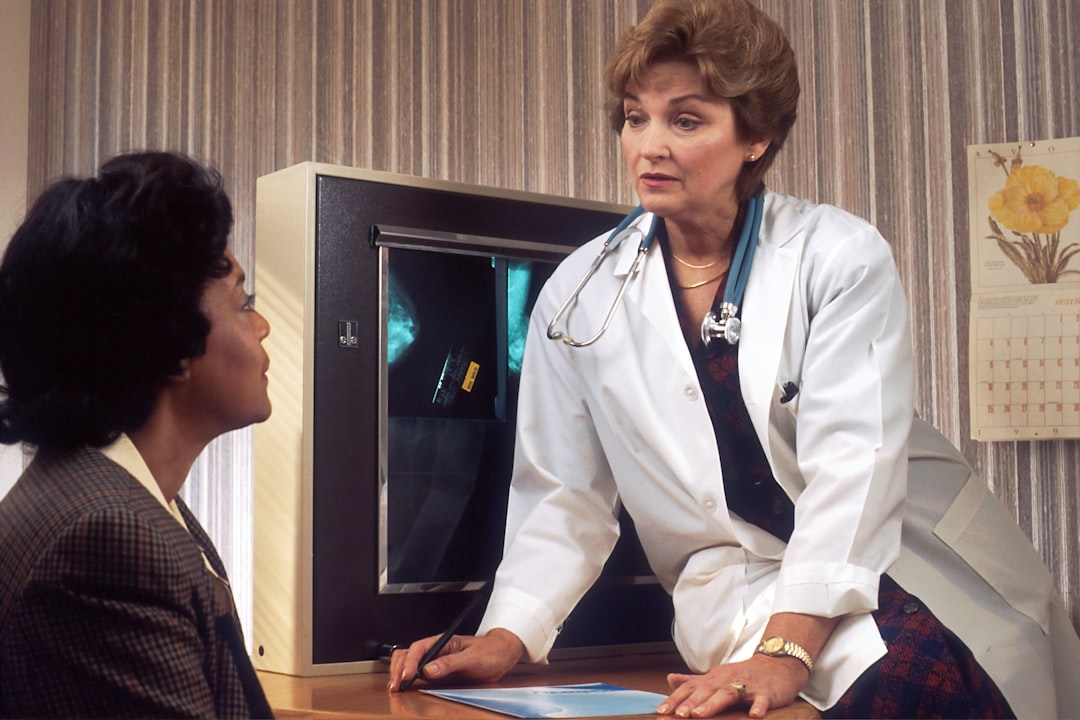Definition and Importance of Informed Consent
Informed consent is a cornerstone of ethical practice in healthcare and research, embodying the principle of respect for patient autonomy. This concept goes beyond merely obtaining a signature on a document; it entails ensuring that individuals fully understand the nature, risks, benefits, and alternatives of the proposed intervention or study before agreeing to participate. In essence, informed consent is about fostering an environment where patients and participants can make well-informed decisions regarding their own health and bodies.
The definition of informed consent encompasses several key elements. Firstly, it involves providing comprehensive information about the procedure or study in a manner that is understandable to the patient or participant. This includes outlining any potential risks and benefits, as well as discussing any alternative options available. Secondly, it requires confirming that the individual comprehends this information sufficiently to make an informed decision. Lastly, informed consent must be given voluntarily without any form of coercion or undue influence.
The importance of informed consent cannot be overstated. At its core, it upholds individuals' rights to make autonomous decisions about their own lives and bodies. In medical contexts, this means respecting patients' choices regarding treatments and interventions after they have been adequately informed of all pertinent details. In research settings, it ensures that participants are aware of what they are consenting to and can weigh the potential impacts on their personal lives.
Moreover, informed consent fosters trust between healthcare providers or researchers and patients or participants. When individuals feel respected and valued in the decision-making process, they are more likely to engage openly with their healthcare providers or researchers. This trust is crucial for effective therapeutic relationships and for the integrity of research studies.
Informed consent also serves as a protective measure against potential abuses of power within medical and research fields. By mandating clear communication and voluntary participation, it helps safeguard against unethical practices such as exploitation or manipulation.
In conclusion, informed consent is fundamental to ethical practice in both healthcare and research domains. It ensures respect for individual autonomy by providing comprehensive information and confirming understanding before any intervention or participation occurs. The principles underlying informed consent-transparency, comprehension, voluntariness-are vital not only for protecting individuals but also for fostering trustful relationships between professionals and those they serve.
Historical Background and Evolution
Informed consent, a fundamental principle in modern medical and research ethics, has a rich historical background and has evolved significantly over time. The concept of informed consent is rooted in the broader ideals of autonomy and respect for individuals, and its development reflects shifts in societal values, legal standards, and medical practices.
The origins of informed consent can be traced back to ancient times when the Hippocratic Oath emphasized the importance of non-maleficence-or doing no harm-though it did not explicitly require patient consent. In medieval times, medical practice was largely paternalistic; physicians made decisions on behalf of patients without necessarily seeking their input or agreement.
A significant shift began during the Enlightenment era in the 18th century, which emphasized individual rights and personal autonomy. Philosophers like John Locke argued that individuals had inherent rights to life, liberty, and property. These ideas gradually permeated into medicine, although true informed consent as we understand it today was still far from being realized.
The 20th century saw critical developments that would shape modern informed consent. One pivotal moment was the revelation of unethical medical experiments conducted during World War II by Nazi doctors. The subsequent Nuremberg Trials led to the establishment of the Nuremberg Code in 1947, which set forth guidelines for ethical research involving human subjects. One of its key principles was voluntary consent-a precursor to today's informed consent requirements.
Despite these advancements, numerous abuses continued into the mid-20th century. For example, the Tuskegee Syphilis Study (1932-1972) involved researchers deceiving African American men about their diagnosis and withholding treatment without their knowledge or consent. Such incidents highlighted glaring ethical failures and spurred further reforms.
In response to these ethical lapses, various countries began instituting more robust regulations around informed consent. In the United States, significant legislation such as the National Research Act of 1974 led to the creation of Institutional Review Boards (IRBs) tasked with overseeing research ethics. The Belmont Report published in 1979 further articulated core principles like respect for persons (which encompasses informed consent), beneficence, and justice.
Today's concept of informed consent involves several key elements: providing comprehensive information about potential risks and benefits; ensuring comprehension by using clear language; confirming voluntariness so that participation is free from coercion or undue influence; and obtaining explicit agreement from participants or patients.
Technological advancements have also influenced how informed consent is obtained and documented. Electronic health records (EHRs) now facilitate more thorough documentation processes while digital platforms offer new ways to provide information interactively.
Despite these advances, challenges remain-particularly concerning vulnerable populations who may face barriers such as language differences or limited health literacy. Ongoing efforts aim to make the process more inclusive and accessible for all individuals involved.
In conclusion, the historical background and evolution of informed consent reflect a journey towards greater respect for individual autonomy within medical practice and research ethics. From ancient paternalism through Enlightenment ideals to contemporary legal frameworks, each step has contributed toward safeguarding human dignity by ensuring that individuals are fully aware participants in decisions affecting their own bodies and lives.
Legal and Ethical Frameworks Governing Informed Consent
Informed consent is a cornerstone of ethical medical practice and patient autonomy. It represents the process through which a patient voluntarily agrees to undergo a particular medical intervention after being informed of its potential risks, benefits, and alternatives. The concept of informed consent is deeply rooted in both legal and ethical frameworks that seek to protect patients' rights and ensure they are active participants in their healthcare decisions.
From an ethical standpoint, informed consent embodies key principles such as respect for autonomy, beneficence, non-maleficence, and justice. Respect for autonomy acknowledges the patient's right to make decisions about their own body and treatment based on adequate information. Beneficence involves acting in the best interest of the patient, while non-maleficence means "do no harm." Justice pertains to fairness in medical decisions and practices.
Legally, informed consent is enshrined in various statutes and case law across different jurisdictions. In many countries, it is a legal requirement that healthcare providers obtain informed consent before performing any significant medical procedure or treatment. Failure to secure proper consent can result in legal consequences for practitioners, including claims of battery or negligence.
The process of obtaining informed consent typically involves several critical steps: providing clear and comprehensive information about the proposed intervention; discussing potential risks, benefits, and alternatives; ensuring the patient's understanding; assessing voluntariness; and documenting the consent process appropriately. This dialogue must be tailored to the individual patient's needs, taking into account factors like language barriers, cognitive abilities, cultural differences, and emotional state.
A well-conducted informed consent process not only fulfills legal obligations but also builds trust between patients and healthcare providers. It empowers patients by involving them in their own care decisions and respecting their personal values and preferences. Conversely, inadequate or rushed consent processes can lead to misunderstandings, dissatisfaction with care outcomes, or even harm.
Special considerations arise in scenarios where patients are unable to provide informed consent themselves due to age (e.g., minors), cognitive impairments (e.g., dementia), or emergent situations where immediate action is required without the opportunity for thorough discussion (e.g., life-threatening emergencies). In such cases, legal mechanisms like advance directives or surrogate decision-makers (e.g., family members or legally appointed guardians) come into play to safeguard patient interests while balancing urgent medical needs.
Ongoing dialogue within both medical ethics circles and legislative bodies continues to refine the standards governing informed consent. Emerging issues such as genetic testing implications or digital health technologies present new challenges that necessitate evolving interpretations of what constitutes adequate disclosure and voluntary agreement.
In conclusion, the dual legal and ethical frameworks governing informed consent serve as vital mechanisms for protecting patient rights while ensuring quality care delivery. As healthcare continues to evolve with technological advancements and complex treatments becoming more commonplace, maintaining robust standards for obtaining truly informed consent remains essential for upholding both moral imperatives and legal requirements within clinical practice.
Core Elements of a Valid Informed Consent
Informed consent stands as a cornerstone of ethical practice in medical, psychological, and research settings. At its core, informed consent is about respecting and upholding the autonomy of individuals by ensuring they have the necessary information to make voluntary and educated decisions regarding their participation in any procedure or study. To be considered valid, informed consent must incorporate several key elements that collectively safeguard the rights and well-being of participants.
The first essential element is competence. For consent to be valid, the individual giving it must have the capacity to understand the information presented and to make a reasoned decision based upon that understanding. This means they must be of sound mind and possess sufficient maturity or developmental capability. In situations where an individual lacks this competence-such as with young children or those with certain cognitive impairments-the responsibility shifts to a legally authorized representative who can provide consent on their behalf.
Next is disclosure, which involves providing comprehensive and understandable information about the procedure or study in question. This encompasses details about its purpose, duration, required procedures, potential risks and benefits, alternative options, and any other relevant aspects. The language used in this disclosure should be clear and devoid of technical jargon to ensure comprehension by individuals without specialized knowledge.
Understanding follows naturally from effective disclosure. It is not enough for information merely to be conveyed; it must also be understood by the participant. This requires checking back with participants through methods such as teach-back techniques where individuals repeat back what they have heard in their own words to confirm their grasp of the material.
Another critical element is voluntariness. Consent must be given freely without coercion or undue influence from healthcare providers, researchers, family members, or others. Participants should feel comfortable making a decision that aligns with their values and preferences without feeling pressured or manipulated.
The element of decision-making then comes into play. After understanding all disclosed information thoroughly, a participant needs time to weigh their options carefully before arriving at a decision regarding participation. This step underscores the importance of not rushing individuals but rather allowing them adequate time for reflection.
Lastly is documentation-the formal recording of the informed consent process-which serves as legal proof that all necessary elements were covered adequately during discussions with the participant. Typically achieved through written forms signed by both parties (the individual consenting and the professional obtaining consent), this documentation provides tangible evidence supporting ethical compliance.
In summary, valid informed consent hinges on competence ensuring mental capacity; comprehensive disclosure delivering understandable information; confirmed understanding verifying comprehension; voluntariness guaranteeing freedom from pressure; thoughtful decision-making allowing reflective choice; followed by proper documentation cementing ethical adherence throughout this vital process aimed at protecting individual autonomy while fostering trust within medical care or research contexts alike.
Process of Obtaining Informed Consent: Steps and Best Practices
Obtaining informed consent is a cornerstone of ethical practice in healthcare, research, and various professional fields. It is a process that ensures individuals understand the nature, risks, benefits, and alternatives of procedures or participation before agreeing to them. This essay outlines the essential steps and best practices for obtaining informed consent effectively.
The first step in obtaining informed consent is providing comprehensive information. This includes a clear explanation of the procedure or study, its purpose, duration, required tasks, potential risks and benefits, and any alternative options available. The language used must be easily understandable to ensure that the individual grasps all pertinent details without confusion. Avoiding medical jargon and technical terms can aid in making the information accessible.
Next is assessing comprehension. It's not enough to merely present information; one must ensure that it has been understood correctly by the person giving consent. This can be achieved through interactive dialogue where questions are welcomed and encouraged. Asking the individual to paraphrase what they have been told can help verify their understanding. If there are gaps or misunderstandings, these should be addressed promptly and thoroughly.
Voluntariness is another critical component of informed consent. The individual must agree to participate or undergo a procedure without any form of coercion or undue influence. Practitioners need to create an environment where individuals feel comfortable making their own decisions free from pressure. They should clarify that declining will not result in any penalty or loss of benefits they are otherwise entitled to receive.
Documenting consent follows once comprehension and voluntariness are confirmed. Written documentation serves as legal evidence that informed consent was obtained properly. This typically involves signing a detailed consent form which reiterates all discussed points including risks, benefits, alternatives, and voluntary participation acknowledgment.
Throughout this process, maintaining effective communication is paramount. Respectful listening and responding empathetically foster trust between parties involved. Providing opportunities for follow-up questions at any time further supports ongoing understanding and comfort levels.
Best practices also suggest continuous updates if new information arises during an ongoing process such as long-term clinical trials or multi-session treatments where new risks or changes may occur over time requiring re-consent.
In conclusion, obtaining informed consent is more than just a bureaucratic requirement; it's about respecting autonomy while ensuring safety through transparency in communication processes within ethical frameworks guiding professional conduct across various fields globally today!
Challenges and Barriers to Effective Informed Consent
Informed consent is a cornerstone of ethical medical practice, ensuring that patients are fully aware of and agree to the treatments they receive. However, achieving truly effective informed consent remains fraught with challenges and barriers that complicate this ideal.
One significant challenge is the complexity of medical information. Medical procedures often involve intricate details about risks, benefits, alternatives, and potential outcomes. These details can be overwhelming for patients who may not have a medical background. It is difficult for healthcare providers to communicate this information in a way that is both comprehensive and understandable. The use of medical jargon further exacerbates this issue, leaving patients confused rather than informed.
Another barrier is the emotional state of the patient at the time of consent. When facing serious diagnoses or emergency situations, patients may experience high levels of stress, fear, or anxiety. These emotions can hinder their ability to process information effectively and make rational decisions. In such cases, even the most thorough explanation might not result in true comprehension or voluntary agreement.
Cultural differences also play a significant role in how informed consent is perceived and enacted. Concepts like autonomy and individual decision-making are not universally valued in the same way across different cultures. For some patients, family involvement in decision-making processes is paramount, while for others, deference to authority figures like doctors is expected. This cultural variability can lead to misunderstandings between healthcare providers and patients about what constitutes adequate informed consent.
Literacy levels add another layer of complexity. Not all patients possess the reading skills necessary to understand written consent forms. Even when verbal explanations are provided, individuals with low health literacy may struggle to grasp essential concepts about their treatment options.
Time constraints present yet another obstacle. In busy clinical settings, physicians often have limited time to spend with each patient. This can result in rushed conversations where critical information might be glossed over or inadequately explained. Patients need time to ask questions and reflect on their choices-a luxury that many healthcare environments do not afford.
Legal considerations also influence how informed consent is obtained and documented. Fear of litigation can drive healthcare providers to focus more on obtaining signed forms than on ensuring genuine understanding from the patient's side. This legalistic approach reduces informed consent to a mere checkbox rather than an interactive dialogue aimed at empowering the patient.
Finally, power dynamics between doctors and patients cannot be ignored. The inherent imbalance in knowledge and authority can make it challenging for patients to feel comfortable voicing concerns or asking questions. They might acquiesce to recommendations without fully understanding them simply because they trust their doctor's expertise or feel intimidated by their position.
Addressing these challenges requires a multifaceted approach: improving communication skills among healthcare providers; utilizing visual aids and simplified language; being sensitive to cultural nuances; allocating sufficient time for discussions; enhancing health literacy through education; balancing legal requirements with ethical obligations; and fostering an environment where patients feel empowered to participate actively in their care decisions.
In conclusion, while informed consent aims to respect patient autonomy and ensure ethical medical practice, numerous challenges impede its effective implementation. Overcoming these barriers demands concerted efforts from both healthcare professionals and systems designed around patient-centered care principles.
Case Studies Highlighting the Importance of Informed Consent
Case Studies Highlighting the Importance of Informed Consent
Informed consent is a cornerstone of ethical practice in both medicine and research. It represents the process by which individuals are provided with comprehensive information about a procedure, treatment, or study, allowing them to make enlightened choices about their participation. The significance of informed consent cannot be overstated, as several case studies have poignantly illustrated its critical role in protecting patient autonomy and ensuring ethical integrity.
One of the most infamous examples highlighting the dire consequences of inadequate informed consent is the Tuskegee Syphilis Study. Conducted between 1932 and 1972 by the U.S. Public Health Service, this study involved 600 African American men, 399 with syphilis and 201 without. The men were misled and not provided adequate information about their diagnosis or the true nature of the study. Crucially, they were not informed that effective treatment for syphilis-penicillin-became available during the course of the study. As a result, many suffered unnecessarily prolonged illness and even death. This gross violation underscored the necessity for rigorous informed consent processes to protect participants from exploitation and harm.
Another illustrative case occurred in 1999 involving Jesse Gelsinger, an 18-year-old who participated in a gene therapy trial at the University of Pennsylvania. Jesse had a mild form of ornithine transcarbamylase deficiency (OTC), a genetic disorder affecting ammonia elimination from his body. Tragically, he died after receiving an experimental gene therapy treatment due to an overwhelming immune response. Investigations revealed that Jesse was not fully informed about previous adverse reactions experienced by other participants nor was he adequately briefed on alternative treatments available to him outside the trial. This incident highlighted significant lapses in conveying critical risk information to participants and emphasized how transparent communication could have potentially altered Jesse's decision to participate.
Further emphasizing this point is Henrietta Lacks' story-a poignant reminder that informed consent extends beyond life into legacy. In 1951, cells from Henrietta Lacks' cervical cancer biopsy were taken without her knowledge or consent at Johns Hopkins Hospital. These cells led to numerous scientific breakthroughs due to their unique ability to reproduce indefinitely in culture-dubbed HeLa cells-but neither she nor her family were notified or compensated despite profound contributions to science and medicine over decades. Henrietta's case underscores that respect for patients' rights includes acknowledging their contributions and obtaining explicit permission before using biological materials for research purposes.
The Nuremberg Trials post-World War II also serve as historical reminders regarding human experimentation ethics-or lack thereof-involving forced medical procedures performed without any form of consent on concentration camp prisoners leading up until then unprecedented guidelines such as The Nuremberg Code was established requiring voluntary consent being essential.
These case studies collectively illustrate why stringent adherence towards obtaining genuine informed consent remains paramount within healthcare settings today; it empowers individuals with control over their bodies while fostering trust between providers/researchers/patients thereby ensuring mutual respect throughout engagements concerned primarily around well-being/safety aspects aligned inherently alongside fundamental principles underpinning humane practices universally acknowledged across diverse spectrums globally transcending beyond just legal mandates but moral obligations too deeply rooted within ethical paradigms shaping contemporary societal norms reflective overall humanity's evolving conscientiousness progressively striving towards safeguarding inherent dignity/rights intrinsic essentially inherent among all humans ubiquitously irrespective contextually bound scenarios varying uniquely yet unified fundamentally through shared ethos empathetically resonating universally therein perpetuating continuous advocacy championing unwaveringly upheld values surrounding sanctity pertaining consensual
Future Directions and Innovations in Informed Consent Practices
Informed consent is a cornerstone of ethical medical practice, ensuring that patients understand the risks and benefits of their treatment options. However, as healthcare evolves with advancements in technology and changes in societal expectations, so too must our approaches to informed consent. Future directions and innovations in informed consent practices promise to make this process more effective, inclusive, and patient-centered.
One significant innovation lies in the integration of digital technologies. Digital platforms can revolutionize how information is communicated to patients. Interactive apps and websites can provide personalized information about treatment options, potential side effects, and recovery processes. These platforms can also include multimedia elements such as videos and animations that explain complex medical concepts in an accessible manner. Additionally, electronic consent forms can be easily updated to reflect the latest medical guidelines and research findings.
Artificial intelligence (AI) offers another promising avenue for enhancing informed consent practices. AI algorithms can analyze large datasets to identify patterns and predict outcomes that might not be apparent through traditional methods. This capability allows for more tailored risk assessments for individual patients based on their unique health profiles. Furthermore, AI-powered chatbots could be employed to answer patient questions in real-time, providing reassurance and clarification outside regular consultation hours.
Another critical direction is improving cultural competence within informed consent processes. As societies become increasingly diverse, it's essential to bridge language barriers and cultural differences that might hinder effective communication. Employing multilingual educational materials and culturally sensitive communication strategies ensures that all patients receive comprehensible information irrespective of their background. This approach fosters trust between healthcare providers and patients from various communities.
The future of informed consent also involves greater emphasis on shared decision-making (SDM). SDM is a collaborative process where clinicians and patients work together to make healthcare decisions that align with the patient's values, preferences, and circumstances. Training healthcare professionals in SDM techniques will empower them to facilitate open dialogues with patients rather than simply presenting information unilaterally.
Additionally, legal frameworks surrounding informed consent must evolve alongside these innovations. Regulations need to accommodate new technologies while ensuring patient privacy remains protected. Policymakers should engage with technologists, ethicists, and patient advocacy groups to create laws that balance innovation with ethical considerations.
Lastly, continuous education for both healthcare providers and patients about the importance of informed consent cannot be overstated. Regular training programs for clinicians on emerging trends in informed consent will keep them abreast of best practices. Simultaneously, public awareness campaigns can educate individuals about their rights regarding medical treatments.
In conclusion, the future direction of informed consent practices is poised at the intersection of technology, cultural competence, shared decision-making, regulatory evolution, and education. By embracing these innovations thoughtfully and ethically, we can ensure that informed consent not only remains a fundamental aspect of medical ethics but also becomes more robustly adapted to meet contemporary challenges in healthcare delivery.





